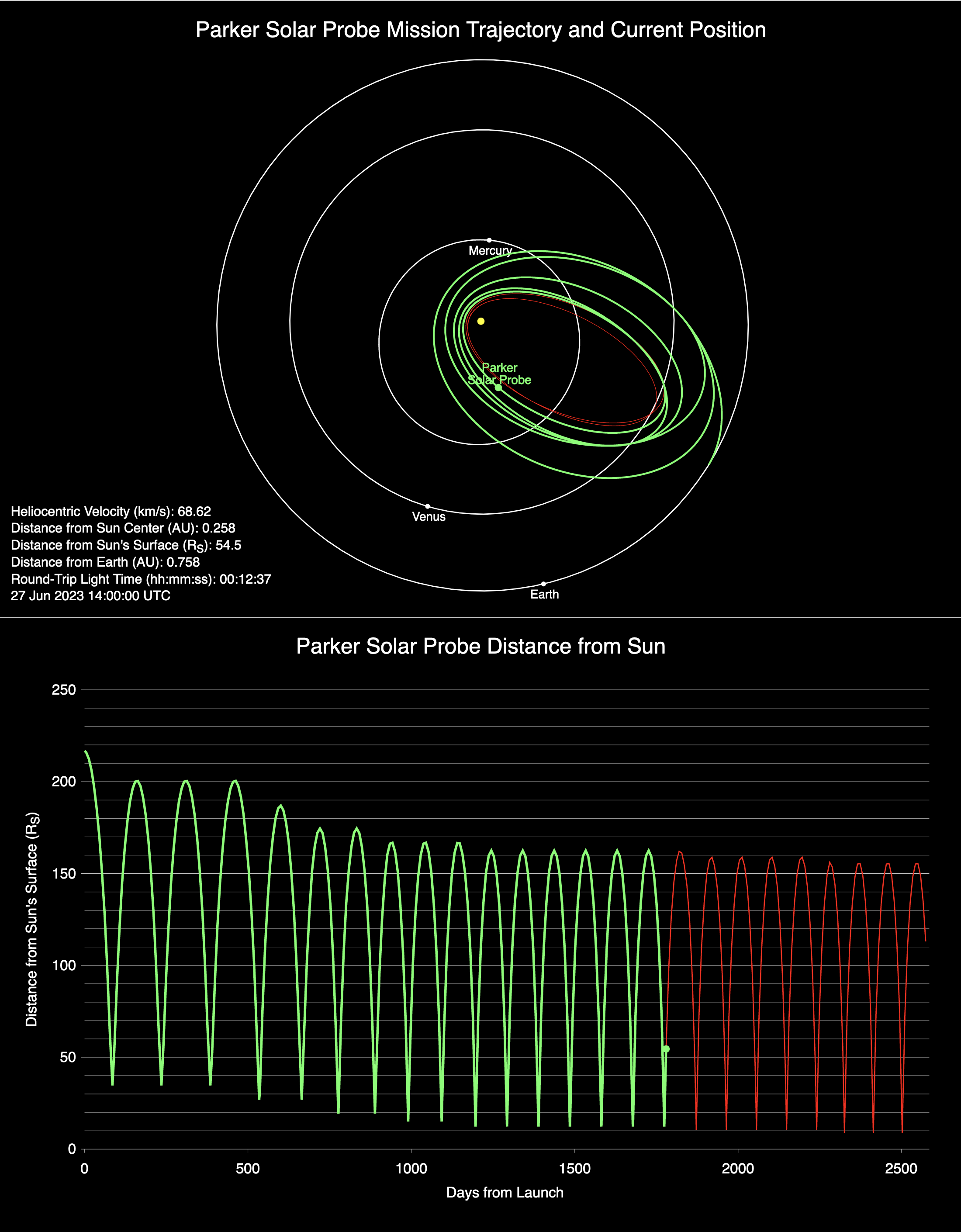
Credit: NASA's Goddard Space Flight Center
The Parker Solar Probe mission
Parker Solar Probe (PSP) is a revolutionary space mission, which will mark an extraordinary step in space exploration. Reaching a minimum distance of 6.16 million kilometers from the Sun's visible surface, its photosphere, PSP will go closer to the Sun than any other mission before. Going so close to our central star, PSP will fly directly through the solar corona. This region marks the outer layers of the solar atmosphere and holds one of the big mysteries in solar physics - it is hotter than the underlying solar surface.
This way, PSP will provide direct measurements of the Sun's outer atmospheric layers for the first time and will help to increase our knowledge about the energy transport mechanisms of the Sun into space.
Illustration of PSP close to the Sun. Credit: NASA/Johns Hopkins APL/Steve Gribben
The PSP mission concentrates on two central questions:
- Why is the corona hotter than the surface?
- Why is there a solar wind?
These question will be addressed through investigating the following science objectives (for more details see Fox et al.):
- Trace the flow of energy that heats the solar corona and accelerates the solar wind.
- Determine the structure and dynamics of the plasma and magnetic field at the sources of the solar wind.
- Explore mechanisms that accelerate and transport energetic particles.
PSP Orbit

Credit: JHU/APL, NASA

Credit: JHU/APL, NASA
PSP was launched on August 12, 2018, at 7:31 UTC from Cape Canaveral (site SLC-37) with a Delta IV Heavy/Star-48BV rocket and a max. launch C3 of 154 km2/s2. To go further inward into the solar system and to reach a lower orbit around the Sun, PSP's angular momentum has to be reduced. This is why the trajectory design includes seven Venus gravity assist flybys over 24 orbits and nearly 7 years after the launch. In this way, a final orbit with a perihelion (closest approach to the Sun) of 9.86 R☉, which are four million miles or 6.4 million kilometers, is reached in 2025. PSP will have an orbital speed of around 430.000 mph (688.000 kph) at this point and will be the fastest object ever built by mankind. Check out on the PSP mission homepage where PSP is now.
So close to the Sun, PSP undergoes much more irradiance as spacecraft in an Earth orbit would gain. A carbon-composite heat shield is mounted on PSPs sun-facing side to protect the spacecraft and its instruments.
Launch of the Delta IV Heavy carring PSP into space. Credit: NASA/Bill Ingalls
Instruments

Credit: JHU/APL, NASA
Onboard PSP are four instruments installed providing complementary measurements and observations. These instruments can measure directly the quantities of the spacecraft's environment, such as plasma characteristics and its magnetic field, and to image the coronal regions as well as solar wind structures the spacecraft is flying through.
The spacecraft is equipped with the following investigations:
- The Fields experiment (FIELDS): Fields measures plasma properties such as the magnetic and electric field, the plasma density, the electron temperature and radio emissions.
- The Integrated Science Investigation of the Sun (IS☉IS): Solar energetic particles (SEPs) with energies between 10s of keV up to 100 MeV are measured with the IS☉IS instrument. This includes energetic electrons, hydrogen and heavy ions.
- The Solar Wind Electrons Alphas and Protons (SWEAP) Investigation: SWEAP counts the most abundant particles in the solar wind. This are electrons, protons and helium ions. Furthermore SWEAP measures their properties such as velocity, density, and temperature.
- The Wide-field Imager for Solar PRobe (WISPR): WISPR is the only imaging instrument onboard PSP. It consists of two telescopes making images of the solar corona and inner heliosphere from an elongation distance of 4 R☉. The concept of WISPR is very similar to that of the Heliospheric Imagers (HI1 and HI2) of the STEREO spacecrafts.
First light of the WISPR Telescopes. Credit: NRL



